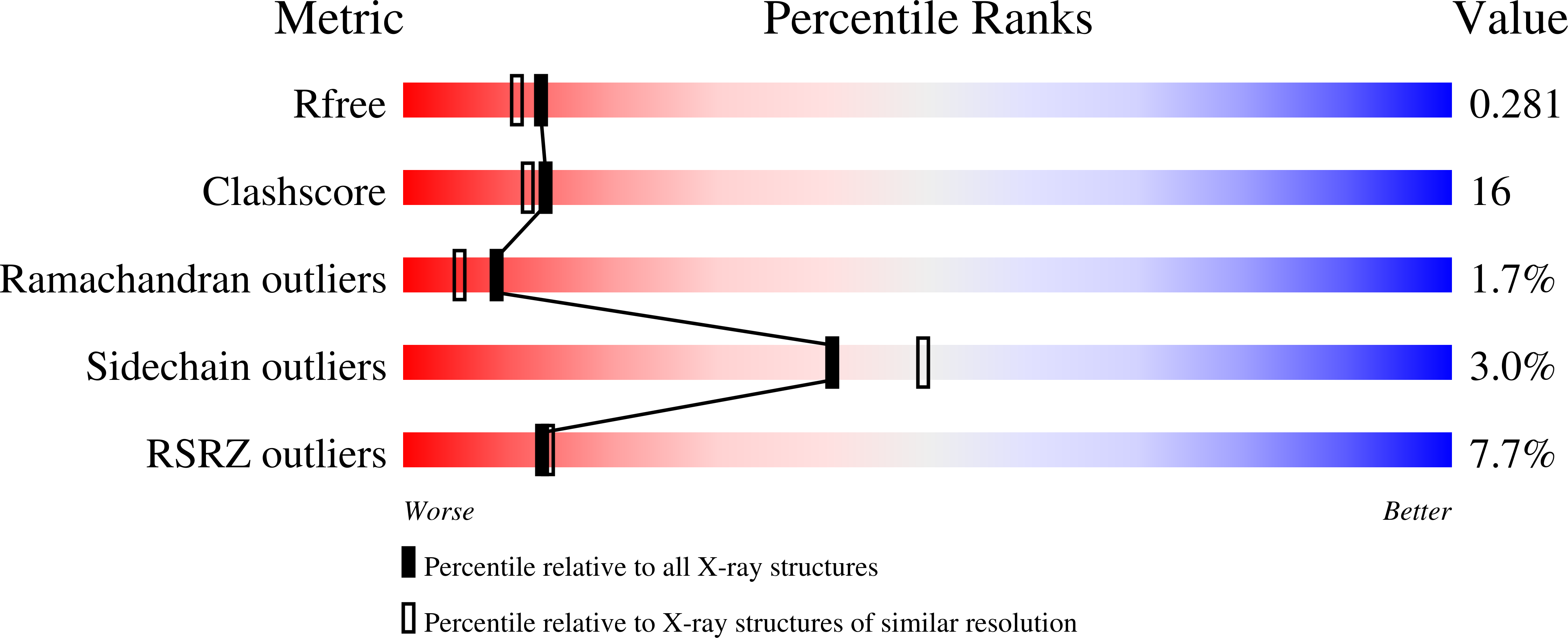
Deposition Date
2005-05-04
Release Date
2005-06-28
Last Version Date
2023-08-23
Entry Detail
PDB ID:
1ZKW
Keywords:
Title:
Crystal structure of Arg347Ala mutant of botulinum neurotoxin E catalytic domain
Biological Source:
Source Organism:
Clostridium botulinum (Taxon ID: 1491)
Host Organism:
Method Details:
Experimental Method:
Resolution:
2.17 Å
R-Value Free:
0.28
R-Value Work:
0.23
Space Group:
P 21 21 2


